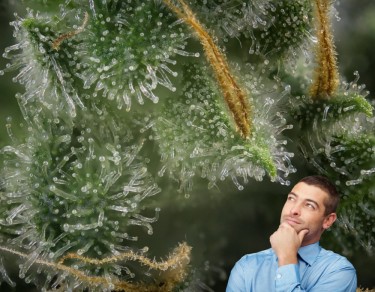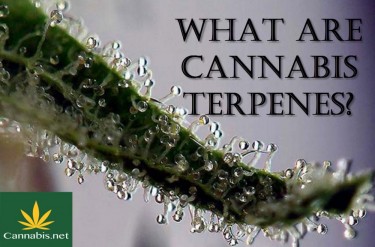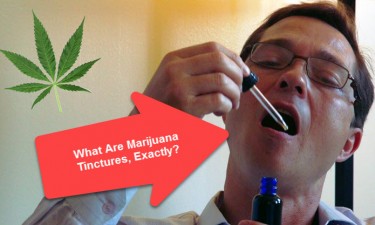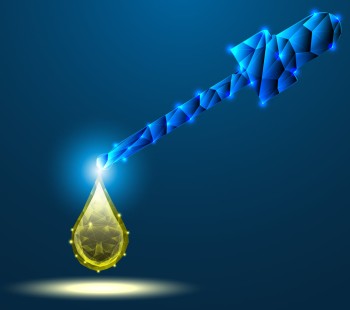What Are Trichomes and Why Are They Important?
What are Marijuana Trichomes? from CannabisNet on Vimeo.
Have you ever walked into a dispensary and tried to manhandle the cannabis, but the budtender told you not to? Ever notice the magnifying glass that some dispensaries offer for inspection of the plant?
Customers are not allowed to manhandle the bud because even the slightest touch can damage the precious trichomes on top of the bud. Sometimes you need a magnifying glass to really be able to see and appreciate these trichomes.
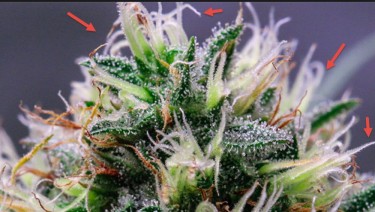
What Are Trichomes?
Trichomes are the tiny crystals that are found on the leaves and buds of quality cannabis strains. When you look closer, such as through the use of a magnifying glass, these trichomes actually look like frost on the cannabis.
The word trichome was derived from the Greek word Tríchōma, which translates to “growth of hair”. Upon closer inspection, you’ll see that trichomes look like small mushroom-like hairs that protrude from the exteriors of cannabis plants. They may seem pretty to look at, but when it comes to trichomes, there’s definitely more than what meets the eye.
Trichomes are actually where a concentration of terpenes and cannabinoids are manufactured within the cannabis plant. This is why the presence of trichomes is extremely valuable, and one of the things that separates top-shelf bud from bottom-shelf bud. The head of these trichomes is where all the magic happens; this is why they’re also called cannabinoid and terpene factories.
However, just because a cannabis strain has more sugary trichomes than the next doesn’t mean that it’s stronger or has more medicinal properties. It’s definitely a good thing to have more trichomes, but biologically speaking, cannabis plants evolved to produce these trichome glands as a defense mechanism since it helps protect the plant from predators like animals and insects. The presence of trichomes make the plant less appealing to predators. It’s also believed that trichomes can help prevent some kinds of fungal growth while protecting the plant from low humidity and high wind. There are other plants in nature that have developed trichomes that also serve unique functions.

Kinds of Trichomes
Trichomes come in many forms, but these are the three most commonly found in cannabis plants:
Bulbous trichomes: These are the smallest kinds of trichomes found in cannabis. Bulbous trichomes are found in the surface of cannabis plants, and can be as small as 10-15 micrometers.
Capitate sessile trichomes: These are a little bigger than bulbous trichomes, and feature a head and a stalk. They’re slightly more abundant than the smallest variety.
Capitate-stalked trichomes: These trichomes can be anywhere from 50-100mm wide, so they’re larger and are visible to the naked eye. Capitate-stalked trichomes have a stalk, which have hypodermic and epidermal parts that create a basal cell, which is attached to a gland head. The gland head is where cannabinoids and terpenes are manufactured.
All trichome varieties manufacture cannabinoids, but the capitate-stalked trichomes are the most valuable because they produce cannabinoids and terpenes at a concentration that other trichomes can’t beat.
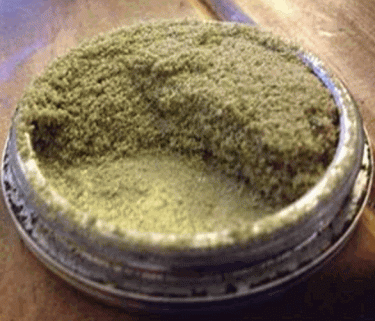
Where Hash, Kief, and Shatter Come From
Since trichomes are cannabinoid and terpene factories, they make up the primary material used in many kinds of cannabis concentrates and extracts. Kief, which is a powdery version of has, is basically made up of decapitated trichome heads. Hash uses an extraction process similar to trichomes, but since hash is pressed, the trichomes are usually crushed and the resin tends to cure. Shatter, wax, and glass are concentrates made from different extraction methods with the objective of collecting then processing the resin of cannabis to create more potent medicine that requires less smoking while delivering higher concentrations of the valuable cannabinoids and terpenes.
Trichome Lifecycle
As soon as cannabis plants are in their bloom phase, this is when the synthesis with trichomes begins. Once the plant starts bearing flowers, trichomes are formed outside the above-ground plant and transport plastids and vacuoles from the stalk to the gland head.
However, the rate at which cannabis plants produce trichomes, as well as the concentration, will depend on environmental factors as well as genetics. Even if a cannabis plant has more trichomes, this won’t translate to more cannabinoids or terpenes; other variables are at play including the UV light which is critical to the synthesis of terpenes and cannabinoids in the trichome head. Generally speaking, plants that are exposed to a broader spectrum of light can produce more cannabinoids, although most times these cases are strain-specific because genetics also play an important role.
OTHER STORIES YOU MAY ENJOY...
WHAT ARE TRICHOMES AND HOW DO YOU GROW MORE OF THEM?
OR..
WHAT ARE TERPENES? CLICK HERE.


